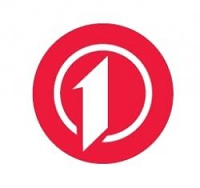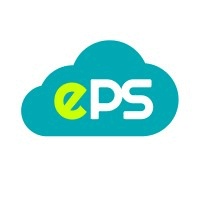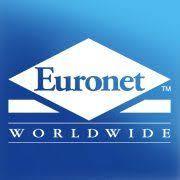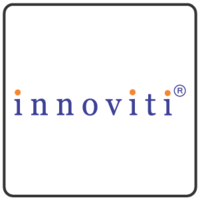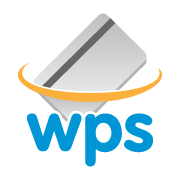What Is Payment Solutions?
Payment solutions are a set of services and technology that make it easier, safer, and more efficient for buyers and sellers to trade money. These solutions are intended to simplify the payment process and provide a consistent experience for both parties involved. Payment solutions exist in a variety of formats, including mobile payment apps, internet payment gateways, and point-of-sale systems.
One of the primary benefits of using payment systems is the convenience they provide to buyers. With the rise of digital and cashless transactions, purchasers no longer need to carry cash or worry about having the correct amount of change. They may easily pay using their preferred method, such as a smartphone app or a credit/debit card, making the process faster and more effective. Payment solutions provide organizations with a secure means to receive payments from clients.
These solutions assure the security and protection of sensitive financial information by include features such as encryption and fraud detection. This not only increases customer trust, but it also helps to avoid chargebacks and other financial losses. Additionally, payment systems include a variety of features and tools that can assist both consumers and sellers. For buyers, these solutions frequently include loyalty programs, discounts, and cashback offers, making the payment process even more tempting.
Payment solutions provide sellers with useful insights and analytics about sales patterns, consumer behavior, and inventory management. When looking for a payment solution, you must evaluate the demands of your company and customers. Transaction fees, customer assistance, interoperability with existing systems, and security measures are all important considerations. It is also critical to select a renowned and trustworthy service to ensure a seamless payment procedure for all parties involved.
What Are The Recent Trends In Payment Solutions?
Payment solutions have changed dramatically in recent years as a result of technological improvements and shifting consumer behavior. These changes have resulted in various trends in the payment industry that purchasers should be aware of while searching for the best payment solution for their business.
We'll explore current payment developments and how they might help your organization.
1. Contactless Payments: Contactless payments are becoming increasingly popular as a payment method. With the growing popularity of mobile wallets and NFC technology, people are increasingly choosing contactless payments over traditional methods like cash or card swipes. This has raised demand for payment solutions that support contactless transactions, allowing customers to pay more easily and quickly.
2. Mobile Payments: Mobile payments are also a significant trend in the payment sector. With the increased usage of smartphones, consumers may now make payments via mobile apps or wallets. This has not only made payments easier for customers, but it has also enabled businesses to access a larger market by providing mobile payment choices.
3. Biometric Authentication: Another development in payment solutions is the use of biometric authentication to ensure secure transactions. With the advent of cybercrime and fraud, traditional authentication techniques like PIN codes and passwords have become less safe. Biometric authentication systems, such as fingerprint or facial recognition, provide a more secure option and are becoming popular among organizations and customers.
4. Subscription-Based Payments: Subscription-based payments are growing common, particularly in the e-commerce business. Consumers are increasingly choosing to pay for items and services on a recurring basis rather than making a single payment. This trend has resulted in the rise of subscription management tools and payment systems designed to meet the needs of organizations who provide subscription-based services.
5. Integration of E-commerce Platforms: As more businesses focus on online sales, payment solutions are increasingly merging with major e-commerce platforms. This integration enables businesses to provide a seamless checkout experience for their customers while also streamlining their payment operations.
6. Real-Time Payments: Real-time payments are in high demand, thanks to the expansion of on-demand services and an instant gratification culture. Real-time payment solutions enable businesses to accept payments instantaneously, enhancing the customer experience and increasing consumer happiness.
Benefits Of Using Payment Solutions
In today's fast-paced business environment, staying current with ever-changing payment methods and technology is critical to any organization's success. Payment solutions have developed as a popular alternative for firms looking to expedite transactions and increase overall efficiency. These solutions have numerous benefits, making them a must-have for any business, regardless of size or industry.
We will look at the many benefits of using payment solutions, allowing you to make an informed decision on which payment solution is ideal for your business.
1. Improved Security: One of the primary advantages of using payment solutions is the increased security that they provide. With data breaches and cyberattacks on the rise, businesses must prioritize the protection of their consumers' sensitive information. Payment solutions use advanced security methods, such as tokenization and encryption, to safeguard cardholder data and avoid fraud. These solutions also follow industry rules, ensuring the security of your transactions.
2. Faster And More Convenient Transactions: Payment solutions allow businesses to accept a wide range of payment methods, such as credit and debit cards, mobile payments, and digital wallets. Customers can select their preferred payment option, which simplifies the transaction process and improves their overall experience. Contactless payments enable transactions to be completed with a single tap or scan, eliminating the requirement for physical contact and making the process faster and more comfortable.
3. Improved Cash Flow: Using payment solutions can dramatically enhance your cash flow by shortening overall transaction times. Businesses that use traditional payment methods frequently have to wait for checks to clear or invoices to be paid, which causes delays in receiving money. Payment solutions provide speedier processing times, which leads to quicker fund settlement and improved cash flow for organizations.
4. Cost Savings: Implementing payment solutions can help organizations save money. You can save money by using a single platform for all of your payment needs rather than managing several payment systems. Furthermore, payment systems frequently provide competitive transaction costs, which result in long-term cost savings.
5. Improved Record Keeping And Reporting: Traditional payment methods, such as cash and cheques, frequently require human record-keeping and are prone to errors. Payment solutions automatically record and track all transactions, allowing businesses to report accurately and in real time. This not only improves financial management but also makes it easier to identify and address anomalies rapidly.
Important Factors To Consider While Purchasing Payment Solutions?
When it comes to selecting payment solutions, there are several crucial elements to consider to ensure that you make the right choice for your company.
Here are some crucial aspects to consider while analyzing payment solutions:
1. Payment Methods: One of the first things to consider is which payment methods the solution accepts. This includes credit cards, debit cards, mobile wallets, and any other payment methods that your clients want. It is critical to select a system that provides a variety of payment choices to meet the needs of your diversified consumer base.
2. Security: Any organization that handles sensitive financial information must prioritize security measures. To secure your clients' data and your business, ensure that the payment solution you choose has comprehensive security measures such as data encryption and fraud detection.
3. Compatibility: Choose a payment solution that works effortlessly with your current systems, such as your e-commerce platform or point-of-sale system. This guarantees that the payment process runs smoothly and efficiently for both you and your consumers.
4. Cost: Payment solutions offer a variety of price methods, including pay-as-you-go and monthly subscription costs. Consider your company's size and transaction volume to find the best cost-effective solution for your requirements.
5. Customer Help: Having dependable customer help in the event of any problems or technological difficulties is critical. Look for a payment solution supplier that provides 24-hour support to guarantee that your organization does not suffer any disruptions.
6. Scalability: Your firm is likely to expand over time, and your payment solution should be able to keep up. Make sure the solution you chose is scalable and can meet your future business requirements.
7. Reputation And Reviews: Conduct research and seek comments from other businesses that have used the payment method you are considering. This will provide you a better idea of the solution's dependability, customer service, and overall happiness.
What Are The Key Features To Look For In Payment Solutions?
When it comes to payment solutions, there are numerous crucial elements that consumers should look for to guarantee they are getting the greatest deal for their needs.
Here are the key elements to look for in payment solutions:
1. Security: Security is one of the most significant considerations when selecting a payment option. With the growing threat of cyber assaults and data breaches, it is critical to select a solution that includes advanced security features to protect your customers' sensitive information.
2. Payment Methods: Another important component to check is the solution's payment mechanism options. Make sure it accepts popular payment methods like credit/debit cards, e-wallets, and mobile payments, as well as any other methods that your target market may choose.
3. User Friendliness: Both you and your customers should find the payment option easy to use. The interface should be simple to use, and the checkout procedure should be straightforward, offering a pleasant and convenient experience for all parties involved.
4. Integration: If you already have a website or a point-of-sale system, you must select a payment solution that interfaces seamlessly with your existing setup. This will save you time and money in the long run, making the transfer to a new payment system easier.
5. Fraud Prevention: Look for a payment solution with strong fraud prevention features, such as fraud detection, real-time warnings, and chargeback protection. This reduces the danger of fraudulent transactions and protects your company from financial losses.
6. Cost: Payment systems have varying pricing plans and charge structures. To identify the most cost-effective solution for your business, assess the whole cost, which includes set-up costs, transaction fees, and any additional expenses.
7. Customer Support: In the event of a technical issue or concern, it is critical to have dependable customer service from the payment solution provider. Look for a solution that provides 24 hour support, preferably via several channels such as phone, email, and live chat.
Why Do Businesses Need Payment Solutions?
In today's fast-paced, digital world, businesses must stay up with numerous payment options to meet the needs of their clients. This is where payment options come into play. Simply explained, payment solutions are systems or services that facilitate the transfer of monies from the buyer to the seller, allowing businesses to accept payments more easily and efficiently. But why do businesses require payment solutions? The answer lies in the multiple benefits it provides.
For starters, payment solutions make things easier for both businesses and their customers. With the advent of e-commerce and online buying, people demand a simple and easy payment process. Payment solutions like online payment gateways, mobile wallets, and digital invoicing systems enable businesses to provide a wide range of payment choices to their customers, making it easier for them to make transactions.
Furthermore, payment systems help organizations save time and money by automating the payment process. Instead of manually processing transactions, businesses can use payment systems to automate the process, lowering the chance of errors and delays. This, in turn, increases the overall efficiency of the business and frees up time for other critical duties. Payment solutions also provide the benefit of receiving payments in multiple currencies for multinational businesses.
This reduces the need for firms to manually convert currencies, making cross-border transactions more efficient and convenient. Furthermore, payment systems offer organizations significant insights into their sales and client purchasing habits via analytics and reporting tools. These data enable firms to make informed decisions about their products, pricing, and marketing tactics.
How Much Time Is Required To Implement Payment Solutions?
The actual amount of time necessary to deploy payment solutions varies depending on a number of factors, including the type of solution selected, the size and complexity of your organization, and the level of customization required. However, completely implementing a payment solution often takes between a few weeks and many months.
To begin, recognize that adopting a payment solution is more than just installing software or configuring a system. It takes careful design, integration, and testing to guarantee that it runs smoothly and is compatible with your present operations. The first stage in the implementation process is to choose the best payment solution for your organization.
You will need to thoroughly assess your needs and compare many possibilities to discover the one that best meets your needs. This can take anything from a few days to a few weeks, depending on the intricacy of your organization and the amount of options you explore. After you've decided on a payment solution, the following step is integration. This entails integrating the solution with your existing systems, such as your website, POS system, and accounting software.
The time necessary for this stage will vary greatly depending on the complexity of your systems and the payment solution provider's capabilities. On average, integration takes between two and six weeks. Following integration, rigorous testing is required to check that all processes are working properly and that any issues have been resolved.
This can take anywhere from a few days to several weeks, depending on the complexity of the solution and the amount of testing required. Finally, once the solution has been properly integrated and tested, it may be deployed for usage. This process usually takes one to two weeks since personnel may need to be taught on the new system and any necessary process adjustments may need to be made.
What Is The Level Of Customization Available In Payment Solutions?
Payment solutions are a crucial component of any organization, and having a unique solution can significantly impact your company's performance. Therefore, it is critical to understand the level of customization offered in payment systems before making a decision. At its foundation, customization is the ability to personalize a payment solution to a business's individual needs and objectives.
The level of customization possible in payment systems varies greatly depending on the provider and their capabilities. Some payment systems provide a one-size-fits-all approach, with businesses having little control over the solution's features and functionality. Other providers, on the other hand, give extensive customisation, allowing organizations to tailor every part of the solution to meet their specific needs.
The level of customisation possible in payment solutions varies depending on the solution type, such as e-commerce, point-of-sale, or mobile payments. Given the nature of online enterprises, e-commerce payment solutions typically offer a higher level of customisation. When determining the extent of customization in payment solutions, it is critical to examine your company's specific requirements.
For example, if you have a physical store, a payment solution with configurable in-store capabilities could be more appropriate. In contrast, an e-commerce company may need customisation choices for online checkout processes. Furthermore, payment solutions can be adjusted in terms of branding, allowing businesses to include their logo and design on the payment page to maintain a consistent brand image.
Some solutions additionally provide customization options for reporting and analytics, allowing businesses to track and analyze payment data in a way that meets their reporting requirements. While high levels of customization might improve the efficiency and customer experience of a company's payment process, it is critical to consider the additional expenses and implementation time that come with it. As a result, it is critical to compare the level of customization offered against the related expenses to determine which solution provides the most value for your company.
Which Industries Can Benefit The Most From Payment Solutions?
Payment solutions are rapidly becoming a crucial tool for organizations of all sizes and industries. These solutions help to speed the payment process and enhance overall efficiency, which leads to improved sales and customer happiness. However, not all sectors have the same payment requirements, and not all payment systems are appropriate for each business type.
As a result, it is critical to identify which industries will profit the most from payment solutions.
1. E-commerce Business: Payment solutions are transforming the fast expanding e-commerce business. With the rise of online buying, people expect a simple and secure payment process. Payment solutions not only enable a range of payment ways, but they also defend against fraud and chargebacks, making them an essential tool for e-commerce enterprises.
2. Retail And Hotel: The retail and hotel industries can also profit greatly from payment systems. In-store payment solutions, such as point-of-sale (POS) systems and contactless payment methods, enable businesses to process transactions quickly and efficiently, minimizing consumer wait times. This is especially crucial in the hospitality industry, where client experience and pleasure are highly valued.
3. Subscription-Based And Recurring Billing Businesses: Payment solutions can also assist businesses that use subscription-based or recurring billing, such as software or streaming services. These technologies automate the payment process, decreasing human error and saving time for both businesses and customers. They also include capabilities such as dunning management, which ensures prompt payments and reduces client turnover.
4. Healthcare Industry: The healthcare industry has specific payment requirements due to the ongoing flow of payments from patients, insurance companies, and government organizations. Payment systems created expressly for the healthcare industry can interface easily with electronic health records, automate billing and claims processing, and simplify the complex payment cycle.
5. Non-profit Organizations: Non-profit organizations likewise require a dependable payment system that can handle donations and secure donor information. Payment systems developed for non-profits frequently include recurring donation choices, reporting and analytics, and configurable donor portals, making it easier for organizations to receive and analyze donations.
Conclusion
Finally, payment solutions play an important role in current business operations. They provide convenience, security, and efficiency to both buyers and sellers. When selecting a payment system, consider transaction fees, integration possibilities, security features, and customer support. By examining your business needs and conducting proper research, you may select a payment solution that suits your demands and helps your company develop.
Keep in mind that the payment environment is continuously changing, so you must continually review and update your selected solution to stay ahead of the competition. By following the advice and considerations mentioned in this buyer's guide, you will be well-prepared to make an informed decision and select the best payment option for your business. Happy shopping!











